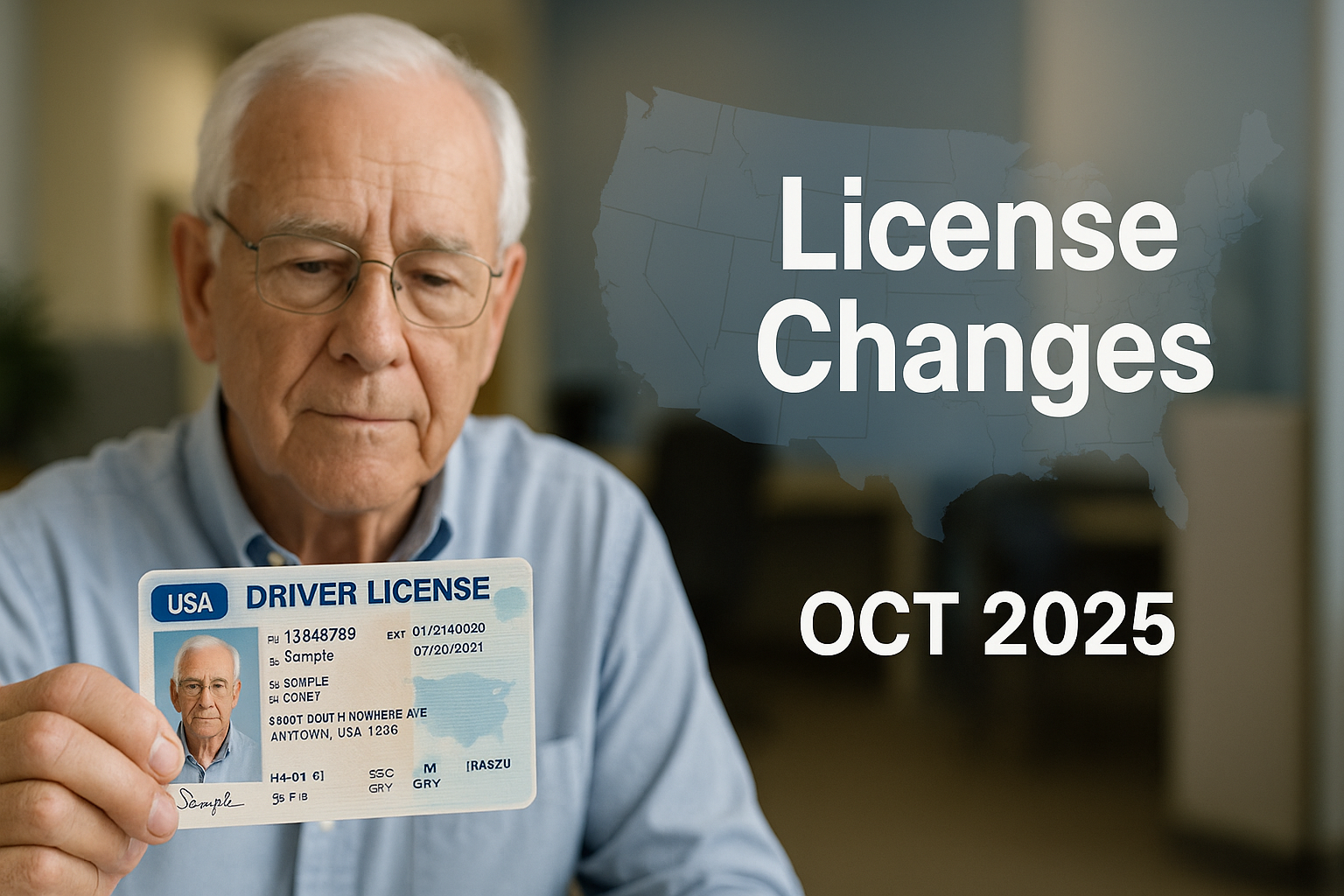From new testing requirements to updated renewal rules, major changes to driver licensing will roll out across the United States starting in October 2025. Here’s what motorists need to know.
Why This Matters Now
Driver’s license rules in the United States are changing to improve road safety and bring greater consistency across states. While most states set their own policies, October 2025 marks the start of nationwide adjustments that will affect millions of drivers. These include stricter identity verification, shorter renewal cycles in certain age groups, and new digital license options. For everyday motorists, staying informed will be essential to avoid fines, delays, or even losing the ability to drive legally.
Key License Changes
| Rule Update | What’s Changing | Who It Affects |
|---|---|---|
| Age-Based Renewals | Some states introducing shorter renewal cycles for older drivers | Motorists aged 70+ |
| Medical & Vision Tests | Expanded requirements during renewals | Seniors and drivers with health conditions |
| Digital Licenses | More states offering mobile driver’s licenses as official ID | All drivers, phased rollout |
| Identity Checks | Stricter document requirements for new and renewed licenses | First-time applicants and renewals |
| CDL Updates | Tougher penalties for commercial drivers violating traffic laws | CDL holders nationwide |
What’s Changing
Starting in October 2025, several states will implement new requirements for older drivers, including more frequent renewals and mandatory vision screenings. Some states are considering cognitive or reaction-time testing for those over 80. At the same time, digital driver’s licenses are being rolled out more widely, allowing drivers to carry official IDs on their smartphones. Identity verification is also becoming stricter, with additional documents required for both new licenses and renewals to reduce fraud. Commercial drivers will face heightened penalties for serious violations such as reckless driving or speeding in work zones.
Impact on Drivers
For seniors, the new rules may mean more regular visits to the DMV and closer monitoring of health and vision. Younger drivers will see few changes, aside from stricter requirements when first applying for a license. The rollout of digital driver’s licenses will offer convenience, but not all states will accept them immediately, creating a period of transition. Commercial drivers are among those most affected, since violations could now carry heavier consequences including suspensions or loss of CDL status.
The Debate
Proponents of the changes argue that tougher renewal standards for older drivers and stricter CDL rules will improve safety on the roads. Digital licenses, they say, are the future of identification and will reduce fraud. Critics argue that more frequent renewals for seniors could unfairly burden safe drivers, especially in rural areas where public transportation is limited. Concerns have also been raised about privacy and cybersecurity risks tied to digital IDs. The debate reflects the challenge of balancing safety, fairness, and modern technology.
Frequently Asked Questions
Will all drivers over 70 need new tests?
Not everywhere. Requirements vary by state, but many are adding more frequent renewals and vision checks for seniors.
What is a digital driver’s license?
It’s a smartphone-based version of your license that can be scanned like a physical ID. Some states already accept them, with more joining in 2025.
Are these federal rules?
Some changes are federal, such as tighter identity requirements, but many details are still set by individual states.
How do the new rules affect commercial drivers?
CDL holders face stricter penalties for violations, including potential suspensions for reckless driving or excessive speeding.
Do I need to update my license immediately in October 2025?
No. The changes apply when you next renew your license or apply for a new one, though some updates (like CDL penalties) take effect right away.
